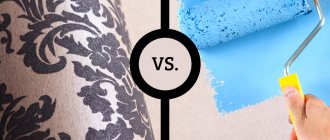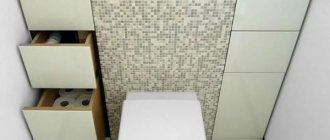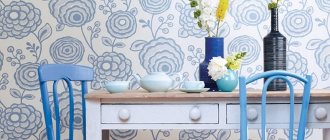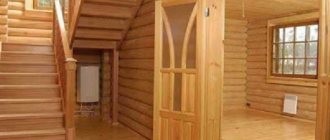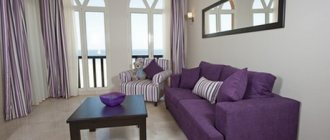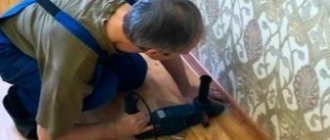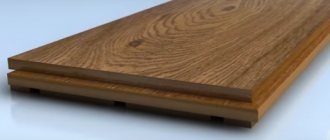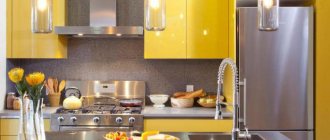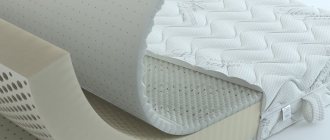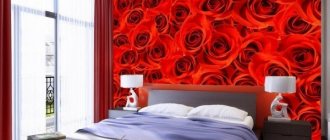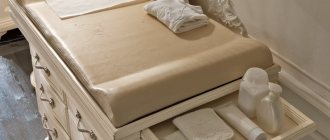The walls in our houses, especially old ones, are most often far from ideal.
There are many ways to fix all chips and imperfections, but most of them require major repairs.
This article will talk about how to visually hide these shortcomings using five types of wallpaper.
Which wallpaper is better: paper, non-woven or vinyl?
When choosing wallpaper, you need to take into account not only the design, but also the material from which it is made. In this article we will look at three main types of wallpaper, each of which has its own pros and cons. Not all will suit every room in the house. Today you will learn the difference between paper, non-woven, vinyl wallpaper and can easily choose the ones you need.
PAPER WALLPAPER
Despite the development of technology and the entry of new types onto the market, paper wallpaper does not become a thing of history, it is widespread and popular. This is a classic of the genre.
pros
- cheap - all the disadvantages of paper wallpaper are offset by the low price
- wide range - a huge variety, many shades, patterns, textures, designs, they can be smooth and embossed, imitate some materials (silk, pile, plaster)
- they allow air to pass through well - paper wallpaper “breathes”, so the room will not be stuffy, and it also prevents the appearance of fungus
- environmentally friendly - made from natural materials, do not emit harmful substances, safe for health
Minuses
- short-lived - lasts for 3-5 years
- fade quickly - do not hang on walls exposed to the sun, otherwise the colors will fade
- difficult to glue - to do a good job of gluing, you need to be a specialist with extensive experience
- easy to damage - pets will quickly scratch paper wallpaper and make it look obscene
- not resistant to abrasion - you will soon notice abrasions near switches, in the corridor in places of contact with outer clothing, etc.
- get dirty easily - they absorb dirt and odors well, it’s easy to put a stain on, but you can’t wash them, just re-glue dirty pieces
- cannot be washed - they do not tolerate water, they tear easily (except for special washable paper wallpapers)
- afraid of humidity - due to low water resistance, not suitable for kitchens and bathrooms
Kinds
- Single layer. The simplest and cheapest, but short-lived, do not hide unevenness, tear easily, and are very difficult to glue.
- Multilayer. More dense and durable, can be embossed, hide wall defects better, and are easier to glue.
- Washable. This is a two-layer wallpaper impregnated with a special composition that makes it relatively waterproof. “Washable” are called conditionally; they should only be carefully wiped with a damp cloth.
Where is it appropriate to glue
Paper wallpaper is best suited for rooms with low load, low traffic, where strength is not so important, but beauty is needed. These are bedrooms, living rooms and children's rooms.
They are also suitable for bedrooms and children's rooms due to their environmental friendliness and breathability.
You cannot glue in the kitchen or bathroom. Not recommended in the hallway.
Non-woven wallpaper
Non-woven wallpaper is a homogeneous material, velvety and smooth. It is made from cellulose fibers, sometimes with the addition of synthetic fibers and textiles. The technology is similar to paper wallpaper.
IMPORTANT! Not to be confused with vinyl wallpaper that has a non-woven base.
pros
- more durable than paper ones - they will last 8-10 years
- stronger than paper - in addition to cellulose, the wallpaper contains binder polymers, which provide them with greater wear resistance
- elastic - not afraid of shrinkage of the new house and the appearance of cracks
- hide defects and unevenness - it is not necessary to glue non-woven wallpaper onto a perfectly prepared surface; thanks to its density, it will hide small unevenness
- environmentally friendly - made from natural materials, do not emit harmful substances
- allow air and moisture to pass through well - thanks to air and vapor permeability, the room will not be stuffy, and mold will not appear on the wall under the wallpaper
- have a slight noise-canceling effect
- easy to glue - cannot be compared with paper ones, non-woven wallpaper is very easy to glue and does not tear in the process
- do not change shape when moistened and dried - do not swell or shrink
- easy to remove - just pry from the edge and remove the wallpaper from the wall
- you can glue other wallpapers on top of them - non-woven wallpaper does not need to be removed, glue new ones directly on the old ones
- can be painted - any non-woven wallpaper can be painted, in a sense they are created for this
Minuses
- high price - the cost is higher not only than paper, but also vinyl wallpaper
- get dirty easily - absorb dirt and collect dust well
- are afraid of humidity - non-woven wallpaper is not suitable for rooms with high humidity
- easy to damage - poorly resistant to mechanical stress, children and pets will quickly ruin the appearance of the wallpaper
- modest assortment - you won’t find much variety in stores, since non-woven wallpaper is often intended for painting; usually they are smooth, although they can be embossed, often monochromatic, rarely colored
Kinds
With low, medium and high density - the denser, the easier it is to glue.
- Smooth, embossed, textured, embossed, patterned.
- For painting and ordinary ones.
Where is it appropriate to glue
They are best suited for rooms with low load, low traffic, where strength is not very important. Due to the fact that they are made from environmentally friendly materials and allow air to pass through well, non-woven wallpaper will fit well in the bedroom and nursery. This will also be a good option for the living room, as they can be painted in a beautiful color, draw interesting patterns, etc.
You shouldn’t waste your money and glue non-woven fabrics in the kitchen, hallway, and especially in the bathroom. They won't live there long.
VINYL WALLPAPERS
They have two layers, the base is paper or non-woven fabric, and the coating is vinyl (also known as polyvinyl chloride or PVC). This top layer makes the wallpaper very durable. And thanks to the properties of PVC and production technologies, vinyl wallpapers are distinguished by great variety and beauty.
pros
- the richest assortment - on the market they are presented in a wide variety of colors, shades, with various designs, patterns, ornaments, textures and reliefs, for any design and for every taste; vinyl wallpaper perfectly imitates not only fabric, suede, silk, leather, but also stone, wood, tile, plaster
- durable - they will bore you faster than they will lose their attractiveness
- indestructible - champion in strength, not afraid of scratches (you can even rub it with a brush), do not wear out over time
- do not burn - vinyl wallpapers consist of non-flammable materials, which speaks in their favor
diy.obi.ru
Vinyl - durable and bright
Vinyl wallpaper belongs to the more expensive segment of the wallpaper market. They are made in several versions, which to one degree or another satisfy the requirements of various rooms in an apartment or house.
Surface irregularities are not so noticeable on bright wallpaper
The thick structure and deep texture of vinyl allows you to hide more defects on the wall. In addition, vinyl is able to imitate the texture of natural finishing materials, which are not always available to us.
If we consider the huge group of wallpapers recommended for hanging on poor quality walls, then three areas stand out.
Foamed vinyl is the cheapest and simplest option, produced by a large number of domestic and foreign wallpaper factories. Due to the thickness of the canvas, wallpaper will perfectly hide defects on the surface, but the decorative coating itself is not the most durable and durable.
Texture of foam vinyl seen in detail
When choosing wallpaper for uneven walls, you can start with this type, try to choose the color, and only then move on to more expensive options. From an aesthetic point of view, it is much prettier and more pleasant.
Washable vinyl - a thick and soft layer of vinyl can hide small defects in the walls in the kitchen, and the surface of this wallpaper is easy to clean. The only “but” is that large bulges in the wall are visible on the glossy surface of the wallpaper, so before gluing, try to get rid of them; it’s better to have depressions or dents.
Decorative vinyl for the kitchen, washable
Hot stamped vinyl is the thickest type of wallpaper available. The wallpaper is very durable and massive, it has a deep texture that can completely hide uneven walls. Vinyl wallpaper produced by hot stamping is not afraid of moisture and can withstand regular wet cleaning.
An important point when choosing a pattern - try to avoid gloss, since when the wallpaper is bent it flickers in places of bulge or depression.
The cost of a roll of such wallpaper is already significant, since, firstly, they have a large standard length, and, secondly, they belong to the more expensive quality segment of the wallpaper market.
Durable and textured imported wallpaper perfectly masks wall defects
Hot stamping vinyl is the flagship wallpaper production of many factories, so in the vast majority it has impeccable quality. The non-woven backing, which is capable of holding a heavy and massive canvas on the wall, also contributed to this quality.
Non-woven fabric is a modern material that combines fabric fibers and cellulose; wallpaper is also made from it.
Rules for choosing colors and patterns
You should not choose designs with geometric shapes or stripes, since there will be obvious distortions in places where the walls are defective, which will inevitably attract the attention of others.
You need to choose designs with a high coverage density, plain wallpaper, wallpaper with randomly scattered prints.
An excellent ornament for hiding the maximum number of wall defects
It is best to look for a rich, perhaps even bright color; it will be difficult to detect distortions in the canvas.
If you are a supporter of calm colors in the interior, then use bright wallpaper on uneven walls, as if creating an accent. In this case, more attention will be focused on calm wallpaper glued to smooth walls.
To summarize, we can conclude the following: don’t worry about your uneven walls, it’s also easy to choose beautiful wallpaper for them, of different quality and price. If you have a very limited budget, choose a duplex; if your needs are a little larger, choose thick and beautiful vinyl, and if you plan to paint the walls one color, then, of course, non-woven fabric. Decorative plaster is also ready to become the finishing layer for walls.
Smooth and repaired walls and corners are the key to a properly carried out repair. Wallpaper pasted onto such surfaces will look presentable, regardless of the appearance of the quality of the finishing material itself. But to level the walls and corners, you need to spend a lot of time and building materials. For example, you will have to apply two or three layers of putty, each of which must dry for at least a day, a primer is applied in three layers, each layer will take 6-8 hours to dry. Add here the application process itself. So it will take several days to level the walls and corners.
And if there is no opportunity, time, money and desire to engage in leveling activities, then you can try gluing wallpaper on uneven walls. To do this, you should not use paper wallpaper, photo wallpaper, with a small vertical pattern, canvases on which dependent patterns are applied, because it will simply be impossible to adjust them to each other. Which ones are possible?
Thick vinyl and non-woven wallpaper will suit this situation just right. At the same time, experts note that non-woven finishing is better used in living rooms, bedrooms, and hallways, because it is more noble in appearance. Vinyl is best used for finishing kitchens, hallways and other office spaces.
It is necessary to take into account that the backing of non-woven wallpaper is the thickest of all the options under consideration. Therefore, this particular category of wallpaper material is considered to be the best when the task is to glue wallpaper to uneven walls and corners. And one more point that worries many consumers. This theme is the breathable structure of the wallpaper you choose. It should be noted that today almost all wallpaper categories and groups are such. Currently, new technologies make it possible to produce vinyl and non-woven wallpaper with micropores through which air can easily pass in two directions.
Thick wallpaper for walls
There is a pattern - the denser the wallpaper, the more imperfections on the wall they hide. Single-layer paper options have low masking ability. But thick wallpaper for uneven walls is just right. Since the price of dense products is higher, you can use duplex paper trellises. The price is low, and they are easy to use.
Vinyl and non-woven wallpaper are better in this regard. The first ones are made by hot stamping and their density ranges from 200 to 300 g/m2. Some manufacturers create canvases with a density of 400 g/m2. They are not afraid of wet cleaning, they are not afraid of light mechanical damage, and, of course, hide the imperfections of the walls.
Non-woven products are heavy and dense. They have a long service life, and to apply them you do not need to prepare the walls to perfection or seal small irregularities and cracks.
To hide imperfections, it is important not only to choose the right wallpaper for uneven walls, but also to paste them correctly to prevent even bigger mistakes. There are several tips to help you cope with the task:
- It is important to measure the strips with a small margin. Moreover, the greater the curvature of the walls, the greater the margin at the bottom and top of the strip.
- When working, you need to use a plumb line and a level to make sure everything is glued correctly. The starting strip must be glued strictly in a vertical order, and all subsequent ones must be aligned with it.
- It is recommended to glue wallpaper end-to-end. Otherwise, distortions on the surface may spoil the final result.
- If the distortions on the wall are minor, then it is enough to use thick vinyl or non-woven fabrics.
- When the ceiling also has a curvature, the uneven edge of the strips is hidden using a ceiling plinth.
As a result, even if the walls in the room are crooked, with defects and unevenness, wallpapering will help hide them. The main thing is to choose the right type of wallpaper, its texture, color and patterns on the surface.
Vinyl wallpaper - beauty for many years
This type of canvas has a fairly dense structure. Unlike duplex, vinyl flooring has a higher price. Such wallpapers are divided into several types:
- Foamed vinyl. The material is offered in a wide range by both domestic and foreign manufacturers. The base of the wallpaper is quite dense and thick, which allows you to hide the unevenness of the wall. This type is available for sale in a wide selection of colors, patterns and affordable prices. Experts believe that foamed vinyl looks more beautiful than duplex.
- Vinyl is washable. This type of wallpaper for uneven walls can be safely used in the kitchen, because its surface can be easily and quickly cleaned of dirt. However, when choosing vinyl for surfaces with defects, there is no need to consider glossy options; they will not be able to mask large bulges, but they hide small irregularities perfectly.
- Hot stamped vinyl. Of all the types presented, this is the thickest and densest material with a deep texture. Such wallpaper will be an excellent solution when you want to completely hide uneven walls. The material is moisture resistant so it can be washed.
Alternative methods
It should be noted that it is possible to put wallpaper on crooked walls, but it is not always possible to hide large defects. This is especially true for recesses. Filling them with putty is quite difficult; it is not a crack or chip that has sharp edges. The putty solution adheres well to them. A deep recess is, in fact, a depression. By covering it with wallpaper, we get a void under the finishing material. Therefore, you will have to imagine.
Look at the photo above. Here is one of the options for how to hide a large unevenness in a wall covered with wallpaper. In this regard, the wallpaper itself is laid in a wave, thereby hiding the flaw. At the same time, the design approach solved not only the problem of the wall surface, but also made it possible to make the interior of the room original. The wave finish is actually beautiful and unusual, but it is also functional. Shelves were created on the wall, which, due to the dense structure of the material, can withstand certain loads. In any case, a couple of books will easily rest on them.
Or this option in the photo above. The place of the big drop is covered with a large mirror. Of course, you will have to take into account the wishes and capabilities of the owner. That is, does he need the same mirror in this place? Or whether it will fit into the interior being created. Although a mirror is just one option. For example, you can cover an uneven wall with a large piece of furniture - a wall or a slide. Hang a photo or painting. There are plenty of options.
Another opportunity to hide the unevenness of the wall. To do this, you can use wallpaper that is saturated with the same type of repeating pattern of an even geometric shape. Such a drawing purely visually blurs the boundaries; it seems to smooth out the surface with its repetition. That is why defects under the finish are not visible. It is impossible to say which of the proposed options is better. Everyone chooses for themselves. It is important to glue the wallpaper correctly, exactly according to the technology, so that it does not become a defect in the wall itself.
So, you can glue wallpaper on uneven walls. Which technology to choose is decided only by the owner of the house.
Old apartments or houses have some peculiarities - their walls are not always smooth. And although this problem can be dealt with if you use plaster or putty, not everyone has the time and means to carry out such a task. If the unevenness is minor, it is easier to stick wallpaper. They will allow you to hide defects, and purchasing and gluing will not require a lot of money and time. But what wallpaper is best to glue on uneven walls? After all, not everyone is suitable for such work.
What should be the texture and color of wallpaper for uneven walls?
Now you know what kind of wallpaper hides the unevenness of the walls, and now let's talk about their color and texture, this also plays a big role when finishing such surfaces. So, the first thing that should be taken into account when choosing canvases for curved walls is that light colors are not suitable for such surfaces, because all defects will be visible through them.
Canvases that have a pattern in the form of stripes and lines will also not be able to hide the curvature of the walls. Experts advise when choosing a material to pay attention to the following details:
- For surfaces with defects, canvases with a small and very frequent pattern are suitable.
- The color should be saturated; the brighter it is, the better the defects will be hidden. Dark colors are also suitable, the main thing is that they fit into the interior of the room.
- The textured base also plays a big role; the thicker it is, the greater the chance of masking all the unevenness.
- It is best to choose canvases with patterns without joining, because it will be very difficult to combine patterns on an uneven surface, plus uneven joints will be very noticeable and will spoil the beauty of the finish.
If you have uneven walls in your house or apartment or they have numerous defects in the form of potholes and cracks, but you do not want to level them before wallpapering, in this case you can use different types of canvases, we wrote about them above. However, you need to understand that in the case of large differences in altitude and severe defects, even the thickest wallpaper will not be able to save the situation. Therefore, before finishing, carefully inspect the walls and assess the situation; you may need to prepare the walls for finishing.
What wallpaper is best for uneven walls?
Uneven walls are a problem in most older homes. Of course, you can level construction areas using plaster, but in some cases you do not have the necessary money and time for this, and for this reason it is easier to paste wallpaper for an uneven wall, which will cover the reliefs.
Types of wallpaper for uneven walls
Consider a list of the most common wallpapers that are indispensable for uneven surfaces:
- Vinyl wallpapers.
Vinyl, due to its properties, is excellent for gluing to an unprepared surface. They are distinguished by numerous functional properties - a wide range of colors, textures, long service life and beautiful design.
The top canvas has a variety of application methods, hence the difference in vinyl wallpaper. The most suitable for gluing on uneven surfaces are:
- Foamed vinyl is the top layer and can foam under the influence of heat treatments. The resulting trellises are quite thick, soft during contact, slightly rough, with a varied structure.
- Hot stamped vinyl is a heavy duty vinyl. The method of manufacturing these trellises makes it possible to apply textures that imitate some other materials. This can be stone, tile, brick, decorative plasters and so on. In appearance it turns out to be difficult to distinguish imitations from the original. This is an excellent solution that makes it possible to effectively hide an uneven wall using wallpaper.
In addition, you can clean such trellises, wash them with a sponge, brushes, and detergents.
- Vinyl wallpaper is a washable type. They were able to prove themselves well during pasting in the hallway, kitchen and toilet. It is necessary to take into account that paper substrates, when wet or dry, are very likely to slightly change their own geometry.
- Non-woven trellis.
In terms of the composition of the included components, non-woven fabric is a natural non-woven material. It is made from cellulose, textile fibers, and a polymer composition.
They are durable and do not change their geometry when wet or dry. For a problem wall, trellises with a corrugated surface and a textured image are mainly chosen.
Non-woven wallpaper looks respectable, elegant, it “breathes” and has excellent properties.
- Cork wallpaper.
They are natural, made from cork wood bark, they are produced on paper or non-woven substrates.
- Paper wallpaper two-layer duplex
Today you can choose duplex with voluminous textures, the addition of shavings, and embossing.
Embossed wallpaper with increased strength characteristics effectively covers poorly prepared walls in appearance, which is why they are so in demand.
What types of wallpaper have you used on uneven walls in your home? Share your experience in the comments.
tradinghub.ru
How to choose wallpaper for uneven walls?
There are many in the construction market. Of course, not all of them are suitable for gluing uneven walls. But it will be difficult to get confused in all the variety of “clothes for walls”, because only two types of wallpaper are suitable for the task we have outlined: vinyl and non-woven. Both vinyl and non-woven wallpaper are dense multi-layer wallpapers, often decorated with embossing. Such wallpaper perfectly lines walls precisely thanks to all these properties. Let's look at the difference between vinyl and non-woven wallpaper.
Separately, I suggest that those wishing to consider the use of liquid wallpaper for uneven walls, read.
Well, we continue.
